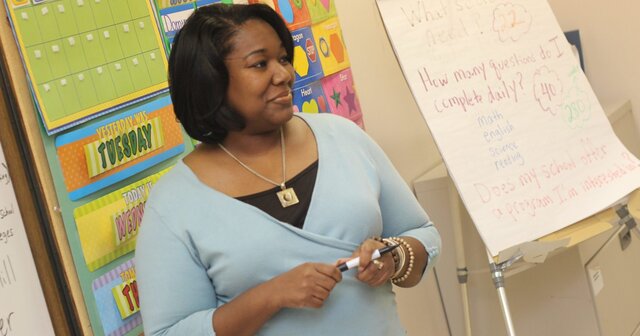

What would be better: Reduce the number of students in a classroom by one or give the teacher a $10,000 raise? That type of trade-off is the reality of school budgets.
But as Michigan debates new statewide regulations on class sizes, few are talking about the trade-offs involved. Smaller class sizes require more teachers and more spending. Michigan already has one teacher for every 14 students, according to Mischooldata.org. Ten years ago, there were 16 students per teacher.
Reducing that average to 12 students, as some people are pushing, would cost more than a billion dollars. School districts might have to hire an extra 18,000 teachers. District leaders already hire the best teachers they can find, so a hiring spree would mean selecting the second-, third- or maybe fourth-best options.
Is it worth it? Probably not. There’s no evidence that Michigan’s public education system has been improved by adding more teachers per student. And there's little evidence that the states which have mandated certain class sizes have seen much improvement as a result.
Some research shows that large declines in class sizes can cause slight increase in student performance. One study found that reducing class sizes from 22 students to 15 increased showed up as a few months of gain four years later. But smaller class size reductions have shown minimal or no impact on student achievement.
Teacher quality is the most important factor influencing student outcomes. As even the left-leaning Economic Policy Institute puts it, “Teacher quality matters. In fact, it is the most important school-related factor influencing student achievement.” The institute notes that class sizes have a much smaller effect.
A great teacher in a classroom with 30 kids produces better outcomes than a mediocre teacher with 20. And if we can attract great teachers through better and performance-based compensation, teaching autonomy, flexibility and meaningful classroom support, that’s where Michigan should put its money — not mandating a certain class size.
The ratio of students to teachers in Michigan has dropped for decades. There is little evidence that this has boosted student achievement. Schools, not elected officials, have a better handle on the trade-offs involving the number of students in a classroom.
Permission to reprint this blog post in whole or in part is hereby granted, provided that the author (or authors) and the Mackinac Center for Public Policy are properly cited.
Get insightful commentary and the most reliable research on Michigan issues sent straight to your inbox.

The Mackinac Center for Public Policy is a nonprofit research and educational institute that advances the principles of free markets and limited government. Through our research and education programs, we challenge government overreach and advocate for a free-market approach to public policy that frees people to realize their potential and dreams.
Please consider contributing to our work to advance a freer and more prosperous state.

Donate | About | Blog | Pressroom | Publications | Careers | Site Map | Email Signup | Contact